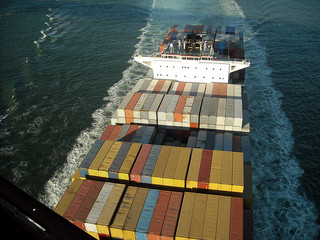 The leased container equipment fleet grew strongly in 2011, and the outlook for 2012 is similar. But nowadays it is the equipment-leasing companies, rather than the shipping lines, that are making more new supply orders, according to Drewry Maritime Research’s latest Container Leasing Industry report.
The leased container equipment fleet grew strongly in 2011, and the outlook for 2012 is similar. But nowadays it is the equipment-leasing companies, rather than the shipping lines, that are making more new supply orders, according to Drewry Maritime Research’s latest Container Leasing Industry report.
The rental container fleet grew by 10.6 percent during 2011, improving on the 9 percent returned in 2010 and forecast to grow 9.5 percent this year, the report said.
But the UK-based shipping consultancy said 2011 was marked by uneven growth, when growth almost stalled altogether in the latter half of the year after a robust expansion in the first half. And the same pattern could happen again in 2012, it said.
“The poorer uptake of 2011, which came after an unprecedented upsurge during 2010, took the lease industry by surprise and quickly turned into an equipment oversupply,” it said.
“It was triggered by a poorer-than-expected peak season performance in mid-year 2011, plus the successful (if unexpected) adoption of greater operating efficiencies by shipping companies.”
For 2012, lease company investment has so far soared again during the opening six months, but has stalled again by mid-summer due to a weak peak season that has left many leasing companies with newbuild surpluses, and further plunged newbuild lease rates.
“As in 2011, much of the growth predicted of the whole of 2012 will have likely taken place in the opening half,” Drewry said.
Nevertheless, the lessors’ expansion has continued to outrun that achieved for fleet owned by shipping lines, and resulted in the box lease industry winning back some share in ownership during 2010-11 after losing considerable ground in 2004-08 to shipping companies. The reverse has applied during 2010-11, when leased fleet growth was 50 percent higher than line-owned equipment.
“Leasing companies have also accounted for the majority of all new investment, thereby ending a run of more than six years of shipping line domination. They bought record quantities in ‘teu’, CEU and investment costs term during 2010-11, with this continuing in 2012,” said Andrew Foxcroft, author of the report.
The reason for the lease industry’s changed position is due to the continued poor fiscal state of the container shipping industry and its limited access to capital.
“By contrast, the existing mix of publicly quoted and privately owned leasing firms, which make up the top ranks, have all along retained good access to competitive financing and continue to attract sizeable inward investment. Indeed, the interest forthcoming from both public and private investors has rarely been stronger,” said Foxcroft.
Photo: jdnx




